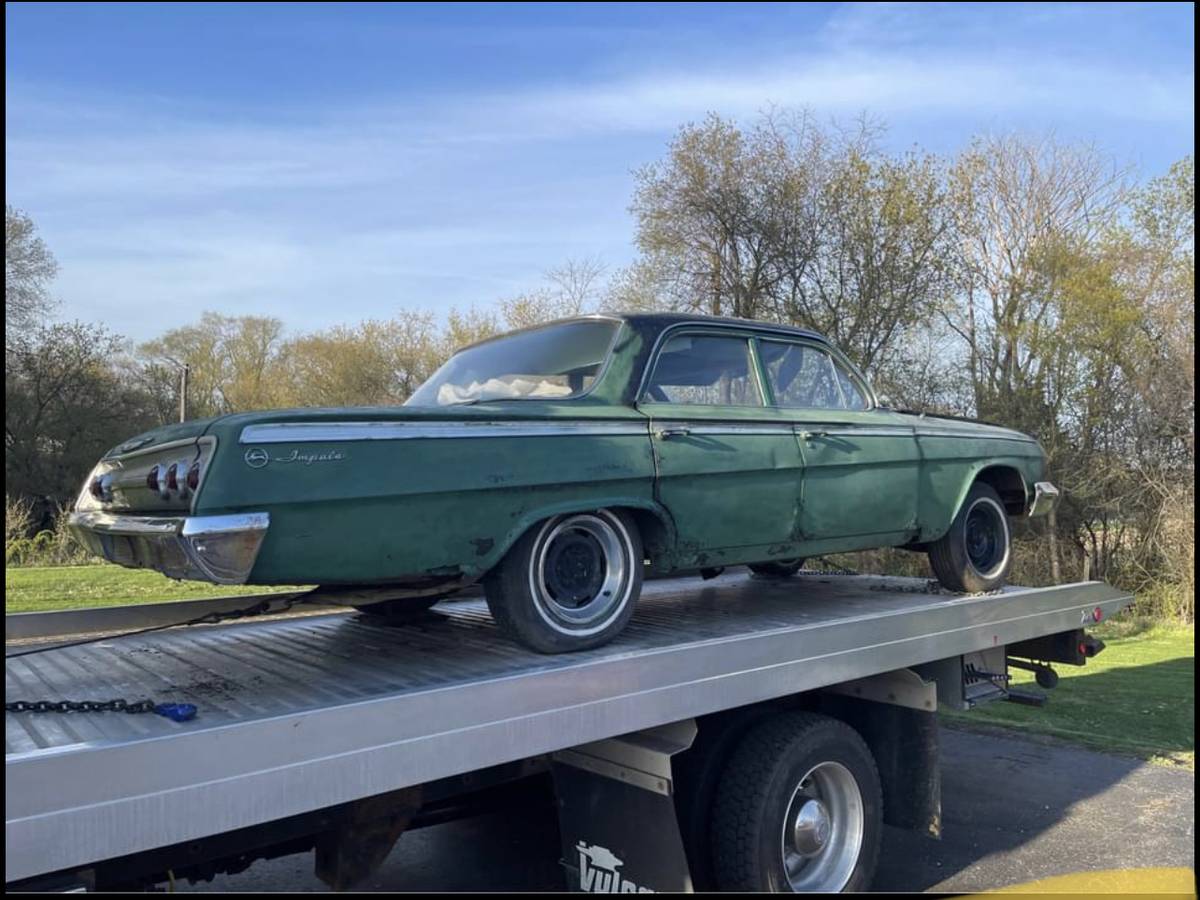
The good news is that the car still looks doable, so if you don’t want to push the Impala out of the automotive world, it still has what it takes to be part of a restoration project.
The engine and the transmission are missing, but the owner promises you’ll find “tons of good parts.” The photos don’t help identify these good parts, but the body and the interior look good. The door panels are still in place, the front seats are ripped, the glass is all there, and the chrome is in good shape.
If you believe this 1962 Impala still has a place on the road and aren’t sure what engine to use, a 409 would fit the car like a glove. The 1962 Impala dropped the 348, so the 409 was the only big-block option remaining in the lineup after its debut in 1961. It was a good choice for the Super Sport, especially as the package rapidly evolved to become a more intriguing upgrade for customers interested in actual performance improvements, not just cosmetic refinements (as was the case with the original 1961 SS package carrying a $53 price tag).
The 409 was available in single and dual four-barrel configurations, with the top version developing 409 horsepower and becoming the best choice for an Impala Super Sport.
However, most Impalas rolled off the assembly lines with a 283 or 327 engine under the hood, as these were the most popular V8 choices, delivering a good balance of power and economy. The 283 was the base unit, while the 327 was the new small-block offering with 250 and 300 horsepower.
Saving this Impala won’t cost you a fortune, though it could become an expensive couch if you agree with the owner and want to turn the car into a cozy living room piece. The seller is willing to let the Impala go for $1,400, though they claim they are also interested in trades. Considering its shape, you’ll need a trailer to take it home, and you can find the Impala parked in Clinton, close to Janesville. It sells with a clean title.










